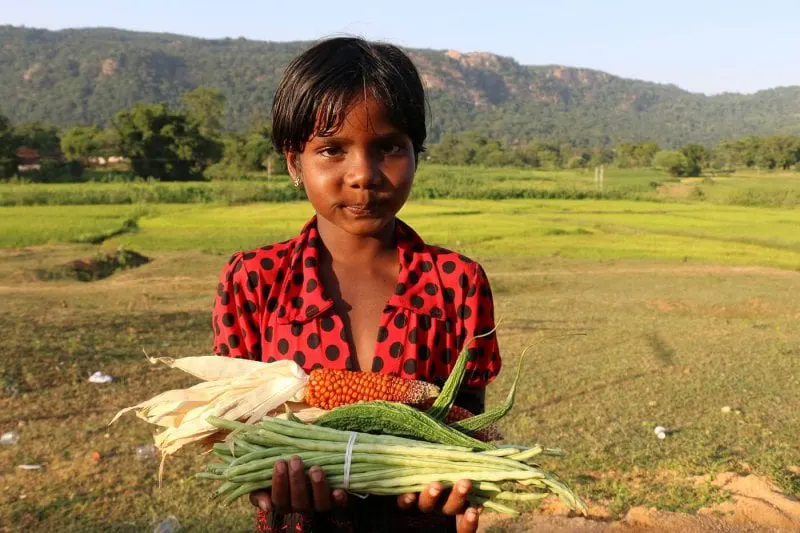Crop extinction crisis? 50% of India’s produce varieties are at risk
Crop extinction crisis? 50% of India’s produce varieties are at risk


Crop and varietal diversity are critically important for global food and nutrition security, as well as the livelihoods of millions of people, especially those living in marginal areas. This diversity includes many different crop species and farmer varieties [1], many of which have been cultivated and safeguarded by farmers and indigenous peoples for millennia on their farms. Each one contains unique genetic traits which could help breeders and farmers adapt our food systems to meet urgent global challenges like climate change adaptation and mitigation, both now and in the future.
While it is widely accepted that many of these crops and varieties are being lost at an alarming rate, there remain large data gaps when it comes to knowing how many we have lost, how many we are losing, and which crops and varieties are under the most urgent threat. These data gaps present a challenge for international frameworks established to monitor agrobiodiversity at country, regional and global levels, and hinder conservation and awareness-raising efforts.
Counting on crop diversity on the farm
The good news is that there is now a methodology that could help plug these data gaps. Developed by the Alliance of Bioversity International and CIAT, working with partners, the Varietal Threat Index proposes a systematic way to monitor changes in varietal diversity on farm, between areas, and over time. The approach uses a rapid assessment technique to gather farmer knowledge about local agrobiodiversity combined with a four-cell assessment method to identify and calculate the level of threat for each crop and variety reported, including both farmer and improved varieties.
Almost 600 farmers from seven Indian states, covering five different agroecological areas, took part in the study. The farmers – representing a mix of gender, ethnicity, and caste – were selected based on their knowledge of crops and varieties across the 17 study sites. They each listed the crops and varieties grown in their household, noted their uses, and indicated their spread and abundance, including information on varieties grown during the previous ten years which were no longer grown.

Results showed that within the study sites there is a significant diversity of landraces grown, especially in central and western regions, more than 50% are threatened. Trends revealed that those crops and varieties mostly used for consumption were often classified as under threat, whereas varieties with multiple uses such as sales, and fodder as well as household food, were less likely to be classified as under threatened. 76% or above of landraces were reported as vulnerable, near threatened, threatened, or lost while varieties of least concern were predominantly improved or released varieties.
How can the Varietal Threat Index be useful?
As efforts to measure progress and advance conservation strategies accelerate under the Post-2020 Global Biodiversity Framework, this kind of information could help inform global efforts by the Food and Agriculture Organization of the United Nations (FAO) and the Secretariat of the Convention on Biological Diversity (CBD) to develop targets and indicators to monitor the global status of plant genetic resources for food and agriculture that include internationally agreed indicators to measure and monitor on farm crop and varietal diversity.
With more than 50% of landraces considered threatened across five different agroecological regions of India, knowing which are most threatened will help inform urgent priority conservation actions to give people the options they need to transform food systems and improve lives, sustainably and inclusively, both now and in the future.
Notes:
[1] Farmer varieties are also called traditional varieties, landraces, local, primitive, heirloom, heritage, and indigenous varieties.
Read the original post here.

 | Videos | More... |

Video: Nuclear energy will destroy us? Global warming is an existential threat? Chemicals are massacring bees? Donate to the Green Industrial Complex!
 | Bees & Pollinators | More... |

GLP podcast: Science journalism is a mess. Here’s how to fix it

Mosquito massacre: Can we safely tackle malaria with a CRISPR gene drive?

Are we facing an ‘Insect Apocalypse’ caused by ‘intensive, industrial’ farming and agricultural chemicals? The media say yes; Science says ‘no’
 | Infographics | More... |

Infographic: Global regulatory and health research agencies on whether glyphosate causes cancer
 | GMO FAQs | More... |

Why is there controversy over GMO foods but not GMO drugs?

How are GMOs labeled around the world?

How does genetic engineering differ from conventional breeding?
 | GLP Profiles | More... |

Alex Jones: Right-wing conspiracy theorist stokes fear of GMOs, pesticides to sell ‘health supplements’




 Viewpoint — Fact checking MAHA mythmakers: How wellness influencers and RFK, Jr. undermine American science and health
Viewpoint — Fact checking MAHA mythmakers: How wellness influencers and RFK, Jr. undermine American science and health Viewpoint: Video — Big Solar is gobbling up productive agricultural land and hurting farmers yet providing little energy or sustainabilty gains
Viewpoint: Video — Big Solar is gobbling up productive agricultural land and hurting farmers yet providing little energy or sustainabilty gains Trust issues: What happens when therapists use ChatGPT?
Trust issues: What happens when therapists use ChatGPT? Fighting deforestation with CO2: Biotechnology breakthrough creates sustainable palm oil alternative for cosmetics
Fighting deforestation with CO2: Biotechnology breakthrough creates sustainable palm oil alternative for cosmetics California, Washington, Oregon forge immunization alliance to safeguard vaccine access against federal undermining
California, Washington, Oregon forge immunization alliance to safeguard vaccine access against federal undermining 30-year-old tomato line shows genetic resistance to devastating virus
30-year-old tomato line shows genetic resistance to devastating virus The free-range chicken dilemma: Better for birds, but with substantial costs
The free-range chicken dilemma: Better for birds, but with substantial costs ‘You have to treat the brain first’: Rethinking chronic pain with Sanjay Gupta
‘You have to treat the brain first’: Rethinking chronic pain with Sanjay Gupta
